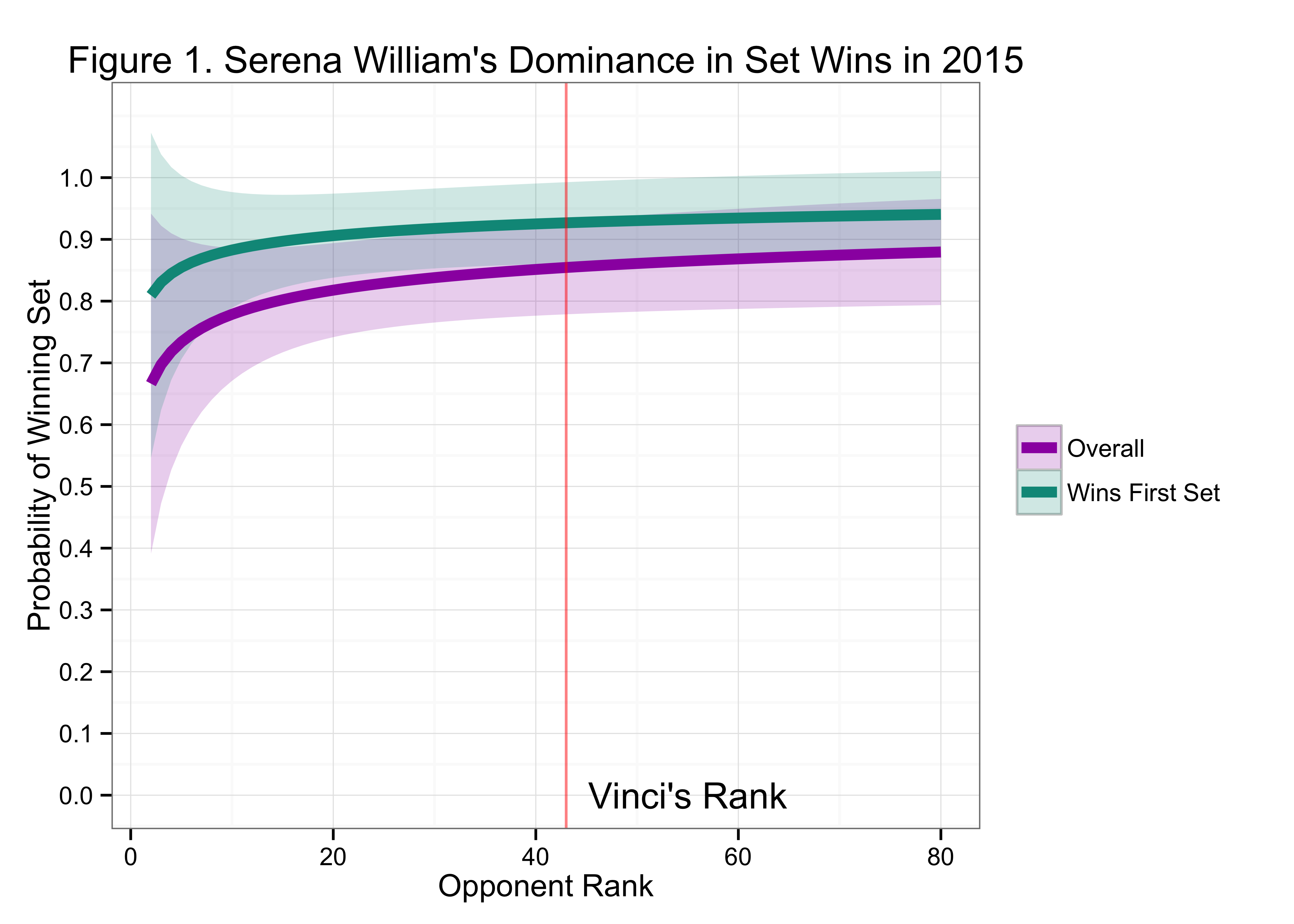Did the US Open Rob Serena of a Calendar Slam?
12 Sep 2015Serena Williams’ loss to unseeded Roberta Vinci at the 2015 US Open semifinal put a shocking end to Williams’ run for a Calendar Slam. When Vinci stepped onto Ashe yesterday, the task before her must have seemed unthinkable. She had never won a set against Williams in their 4 previous meetings, and all of their prior matches were before the semifinal round, when Williams’ is known not to play at her highest level. Bookies put Vinci’s odds of advancing to the final at 300-1–perhaps, not as unimaginable as the discovery of a new human species but still one of the greatest upsets in tennis history.
Some commentators are likely to shrug off Williams’ loss as being consistent with a long history of “inconsistency” on the women’s game. There has been a lot of discussion this tournament about the assumed unpredictability of the women’s game and how much the best-of-3 format is the cause of higher-ranked female players getting ousted more often at Slams than male players, who play best-of-5 matches.
Did the US Open rob Williams of her moment in history because Vinci only had to win 2 sets against her instead of 3?

To answer this we need to take a closer look at Williams’ dominance in winning sets.
In 2015, Williams has rarely given up a set, especially against players outside of the top 20 (Figure 1). Going into the semifinal Williams had an expected chance of 85% of winning a set against Vinci. Serena has comeback from being down a set more than usual this year, which suggests that we would expect her to do even better after the first set of a match. Indeed, after winning the first set in the semifinal, Williams’ set win probability jumped to 92%. Of course, Williams, like any competitor, can have an off day. But even on a bad day–shown by the 95% confidence bands in Figure 1–, we wouldn’t have expected her chance of winning a set to drop below 77%.
Given Williams’ set-win performance this year, we can estimate how much more of an advantage she would have had if she had faced Vinci in a best-of-5 match rather than a best-of-3 (Figure 2). It turns out that the advantage she might have had would depend on her strength when she stepped to the service line yesterday. If Williams’ was at her best, then it would have made little difference what format she was playing. The numbers would have predicted a certain win and anything less would have to be chalked up to bad luck.
However, if Williams was having an off day (which might not be unreasonable in a year that has been paradoxically characterized by dominance in the face of self-doubt) the best-of-5 could have given her an edge of as much as 10 percentage points of winning the match and brought her that much closer to a 22nd Major title.
Vinci already won the hearts of fans with her sincere, at times contrite, words about her win. Today she will have a chance to win their belief and prove to everyone that her place in the finals isn’t just the random luck of the best-of-3.
If you liked this story, share it with your followers or follow this site @StatsOnTheT on Twitter.

